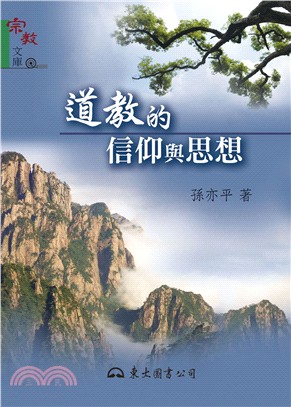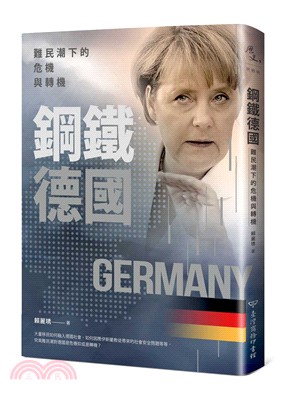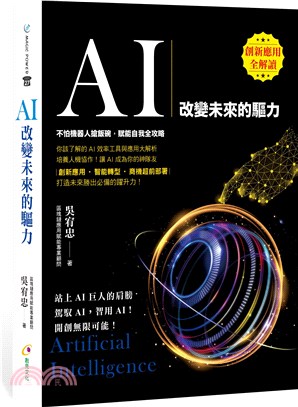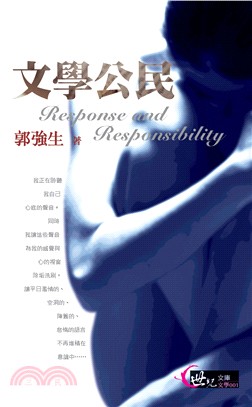LASER COOLING OF SOLIDS - PRINCIPLES, DESIGN, TECHNOLOGIES AND APPLICATIONS
商品資訊
定價
:NT$ 7350 元優惠價
:90 折 6615 元
若需訂購本書,請電洽客服 02-25006600[分機130、131]。
相關商品
商品簡介
作者簡介
目次
商品簡介
Edited by the two top experts in the field with a panel of International contributors, this is a comprehensive up-to-date review of research and applications.
Starting with the basic physical principles of laser cooling of solids, the monograph goes on to discuss the current theoretical issues being resolved and the increasing demands of growth and evaluation of high purity materials suitable for optical refrigeration, while also examining the design and applications of practical cryocoolers.
An advanced text for scientists, researchers, engineers, and students (masters, PHDs and Postdoc) in laser and optical material science, and cryogenics.
Starting with the basic physical principles of laser cooling of solids, the monograph goes on to discuss the current theoretical issues being resolved and the increasing demands of growth and evaluation of high purity materials suitable for optical refrigeration, while also examining the design and applications of practical cryocoolers.
An advanced text for scientists, researchers, engineers, and students (masters, PHDs and Postdoc) in laser and optical material science, and cryogenics.
作者簡介
Richard I. Epstein is a Laboratory Fellow at Los Alamos National Laboratory (LANL) in New Mexico. He was an undergraduate in Engineering Physics at Cornell University and received his Ph.D. in Applied Physics from Stanford University. He then did research at the University of Texas at Austin, Harvard University and Nordita in Copenhagen, before taking his present position. He has published over 150 papers in theoretical astrophysics, satellite instrumentation and applied physics. He leads the effort in laser cooling of solids at LANL. He is a fellow of Optical Society of America.
Mansoor Sheik-Bahae is a professor of Physics and Astronomy and the chair of Optical Science and Engineering at the University of New Mexico (UNM), Albuquerque NM (USA). He graduated from the State University of New York (Buffalo), and subsequently spent 7 years as a research scientist at CREOL-University of Central Florida before joining UNM in 1994 where he currently heads the Consortium for Laser Cooling of Solids. Professor Sheik-Bahae has authored more than 200 scientific papers in nonlinear optics, ultrafast phenomena and solid-state laser cooling, with more than 4000 citations to his work. He is a fellow of Optical Society of America.
Mansoor Sheik-Bahae is a professor of Physics and Astronomy and the chair of Optical Science and Engineering at the University of New Mexico (UNM), Albuquerque NM (USA). He graduated from the State University of New York (Buffalo), and subsequently spent 7 years as a research scientist at CREOL-University of Central Florida before joining UNM in 1994 where he currently heads the Consortium for Laser Cooling of Solids. Professor Sheik-Bahae has authored more than 200 scientific papers in nonlinear optics, ultrafast phenomena and solid-state laser cooling, with more than 4000 citations to his work. He is a fellow of Optical Society of America.
目次
Preface.
1 Optical Refrigeration in Solids: Fundamentals and Overview (Richard I. Epstein and Mansoor Sheik-Bahae).
1.1 Basic Concepts.
1.2 The Four-Level Model for Optical Refrigeration.
1.3 Cooling Rare-Earth-Doped Solids.
1.4 Prospects for Laser Cooling in Semiconductors.
1.5 Experimental Work on Optical Refrigeration in Semiconductors.
1.6 Future Outlook.
References.
2 Design and Fabrication of Rare-Earth-Doped Laser Cooling Materials (Markus P. Hehlen).
2.1 History of Laser Cooling Materials.
2.2 Material Design Considerations.
2.2.1 Active Ions.
2.2.1.1 Rare-Earth Ions for Laser Cooling.
2.2.1.2 Active Ion Concentration.
2.2.2 Host Materials.
2.2.2.1 Multiphonon Relaxation.
2.2.2.2 Chemical Durability.
2.2.2.3 Thermal and Thermomechanical Properties.
2.2.2.4 Refractive Index.
2.2.3 Material Purity.
2.2.3.1 Vibrational Impurities.
2.2.3.2 Metal-Ion Impurities.
2.3 Preparation of High-Purity Precursors.
2.3.1 Strategies for Preparing High-Purity Precursors.
2.3.2 Process Conditions.
2.3.2.1 Purity of Commercial Precursors.
2.3.2.2 Process Equipment.
2.3.2.3 Clean Environment.
2.3.3 Material Purification.
2.3.3.1 Filtration and Recrystallization.
2.3.3.2 Solvent Extraction Using Chelating Agents.
2.3.3.3 Fluorination and Drying in Hydrogen Fluoride Gas.
2.3.3.4 Sublimation and Distillation.
2.3.3.5 Electrochemical Purification.
2.3.4 Determination of Trace Impurity Levels.
2.4 Glass Fabrication.
2.4.1 Glass Formation in ZrF4 Systems.
2.4.2 ZBLAN Glass Fabrication.
2.4.2.1 Melting of the Starting Materials.
2.4.2.2 Evaporative Losses.
2.4.2.3 Dissolution and Homogenization.
2.4.2.4 Optimum Rate of Cooling.
2.4.2.5 Viscosity for Casting.
2.4.2.6 Typical Glass Fabrication Parameters.
2.4.3 Fluoride, Chloride, and Sulfide Glass Fabrication.
2.5 Halide Crystal Growth.
2.6 Promising Future Materials.
2.6.1 Simplified Fluoride Glasses.
2.6.2 Fluoride Crystals.
2.6.3 Chloride and Bromide Crystals.
References.
3 Laser Cooling in Fluoride Single Crystals (Stefano Bigotta and Mauro Tonelli).
3.1 Introduction.
3.2 Physical Properties.
3.3 Experimental.
3.3.1 Growth Apparatus.
3.3.2 Spectroscopic Setup.
3.3.3 Cooling Setup.
3.4 Spectroscopic Analysis.
3.5 Cooling Results.
3.5.1 Cooling Potential.
3.5.2 Bulk Cooling.
3.6 Conclusion.
References.
4 Er3+-Doped Materials for Solid-State Cooling (Joaquin Fernandez, Angel Garcia-Adeva and Rolindes Balda).
4.1 Low Phonon Energy Materials.
4.1.1 KPb2Cl5 Crystal.
4.1.2 Fluorochloride Glasses.
4.2 Internal Cooling Measurements.
4.3 Bulk CoolingMeasurements.
4.4 Influence of Upconversion Processes on the Cooling Efficiency of Er3+.
4.4.1 Spectroscopic Grounds: Upconversion Properties of Er3+ Under Pumping in the 4I9/2 Manifold.
4.4.2 A Phenomenological CoolingModel Including Upconversion.
References.
5 Laser Refrigerator Design and Applications (Gary Mills and Mel Buchwald).
5.1 Introduction.
5.2 Modeling.
5.3 Modeling Results.
5.4 Design Issues.
5.5 Mirror Heating.
5.6 Applications.
5.6.1 Comparison to Other Refrigeration Technologies.
5.6.2 Vibration.
5.6.3 Electromagnetic and Magnetic Noise.
5.6.4 Reliability and Lifetime.
5.6.5 Ruggedness.
5.6.6 Cryocooler Mass and Volume.
5.6.7 Efficiency and System Mass.
5.6.8 Cost.
5.7 Microcooling Applications.
References.
6 Microscopic Theory of Luminescence and its Application to the Optical Refrigeration of Semiconductors (Greg Rupper, Nai H. Kwong and Rolf Binder).
6.1 Introduction.
6.2 Microscopic Theory of Absorption and Luminescence.
6.3 Cooling Theory.
6.4 Cooling of Bulk GaAs.
6.5 Cooling of GaAs Quantum Wells.
6.6 Cooling of Doped Bulk Semiconductors.
6.7 Conclusion.
References.
7 Improving the Efficiency of Laser Cooling of Semiconductors by Means of Bandgap Engineering in Electronic and Photonic Domains (Jacob B. Khurgin).
7.1 Introduction.
7.2 Engineering the Density of States Using Donor–Acceptor Transitions.
7.3 Refrigeration Using Phonon-Assisted Transitions.
7.4 Laser Cooling Using Type II Quantum Wells.
7.5 Photonic Bandgap for Laser Cooling.
7.6 Novel Means of Laser Cooling Using Surface Plasmon Polaritons.
7.7 Conclusions.
References.
8 Thermodynamics of Optical Cooling of Bulk Matter (Carl E. Mungan).
8.1 Introduction.
8.2 Historical Review of Optical Cooling Thermodynamics.
8.3 Quantitative Radiation Thermodynamics.
8.4 Ideal and Actual Performance of Optical Refrigerators.
8.5 Closing Remarks.
References.
Index.
1 Optical Refrigeration in Solids: Fundamentals and Overview (Richard I. Epstein and Mansoor Sheik-Bahae).
1.1 Basic Concepts.
1.2 The Four-Level Model for Optical Refrigeration.
1.3 Cooling Rare-Earth-Doped Solids.
1.4 Prospects for Laser Cooling in Semiconductors.
1.5 Experimental Work on Optical Refrigeration in Semiconductors.
1.6 Future Outlook.
References.
2 Design and Fabrication of Rare-Earth-Doped Laser Cooling Materials (Markus P. Hehlen).
2.1 History of Laser Cooling Materials.
2.2 Material Design Considerations.
2.2.1 Active Ions.
2.2.1.1 Rare-Earth Ions for Laser Cooling.
2.2.1.2 Active Ion Concentration.
2.2.2 Host Materials.
2.2.2.1 Multiphonon Relaxation.
2.2.2.2 Chemical Durability.
2.2.2.3 Thermal and Thermomechanical Properties.
2.2.2.4 Refractive Index.
2.2.3 Material Purity.
2.2.3.1 Vibrational Impurities.
2.2.3.2 Metal-Ion Impurities.
2.3 Preparation of High-Purity Precursors.
2.3.1 Strategies for Preparing High-Purity Precursors.
2.3.2 Process Conditions.
2.3.2.1 Purity of Commercial Precursors.
2.3.2.2 Process Equipment.
2.3.2.3 Clean Environment.
2.3.3 Material Purification.
2.3.3.1 Filtration and Recrystallization.
2.3.3.2 Solvent Extraction Using Chelating Agents.
2.3.3.3 Fluorination and Drying in Hydrogen Fluoride Gas.
2.3.3.4 Sublimation and Distillation.
2.3.3.5 Electrochemical Purification.
2.3.4 Determination of Trace Impurity Levels.
2.4 Glass Fabrication.
2.4.1 Glass Formation in ZrF4 Systems.
2.4.2 ZBLAN Glass Fabrication.
2.4.2.1 Melting of the Starting Materials.
2.4.2.2 Evaporative Losses.
2.4.2.3 Dissolution and Homogenization.
2.4.2.4 Optimum Rate of Cooling.
2.4.2.5 Viscosity for Casting.
2.4.2.6 Typical Glass Fabrication Parameters.
2.4.3 Fluoride, Chloride, and Sulfide Glass Fabrication.
2.5 Halide Crystal Growth.
2.6 Promising Future Materials.
2.6.1 Simplified Fluoride Glasses.
2.6.2 Fluoride Crystals.
2.6.3 Chloride and Bromide Crystals.
References.
3 Laser Cooling in Fluoride Single Crystals (Stefano Bigotta and Mauro Tonelli).
3.1 Introduction.
3.2 Physical Properties.
3.3 Experimental.
3.3.1 Growth Apparatus.
3.3.2 Spectroscopic Setup.
3.3.3 Cooling Setup.
3.4 Spectroscopic Analysis.
3.5 Cooling Results.
3.5.1 Cooling Potential.
3.5.2 Bulk Cooling.
3.6 Conclusion.
References.
4 Er3+-Doped Materials for Solid-State Cooling (Joaquin Fernandez, Angel Garcia-Adeva and Rolindes Balda).
4.1 Low Phonon Energy Materials.
4.1.1 KPb2Cl5 Crystal.
4.1.2 Fluorochloride Glasses.
4.2 Internal Cooling Measurements.
4.3 Bulk CoolingMeasurements.
4.4 Influence of Upconversion Processes on the Cooling Efficiency of Er3+.
4.4.1 Spectroscopic Grounds: Upconversion Properties of Er3+ Under Pumping in the 4I9/2 Manifold.
4.4.2 A Phenomenological CoolingModel Including Upconversion.
References.
5 Laser Refrigerator Design and Applications (Gary Mills and Mel Buchwald).
5.1 Introduction.
5.2 Modeling.
5.3 Modeling Results.
5.4 Design Issues.
5.5 Mirror Heating.
5.6 Applications.
5.6.1 Comparison to Other Refrigeration Technologies.
5.6.2 Vibration.
5.6.3 Electromagnetic and Magnetic Noise.
5.6.4 Reliability and Lifetime.
5.6.5 Ruggedness.
5.6.6 Cryocooler Mass and Volume.
5.6.7 Efficiency and System Mass.
5.6.8 Cost.
5.7 Microcooling Applications.
References.
6 Microscopic Theory of Luminescence and its Application to the Optical Refrigeration of Semiconductors (Greg Rupper, Nai H. Kwong and Rolf Binder).
6.1 Introduction.
6.2 Microscopic Theory of Absorption and Luminescence.
6.3 Cooling Theory.
6.4 Cooling of Bulk GaAs.
6.5 Cooling of GaAs Quantum Wells.
6.6 Cooling of Doped Bulk Semiconductors.
6.7 Conclusion.
References.
7 Improving the Efficiency of Laser Cooling of Semiconductors by Means of Bandgap Engineering in Electronic and Photonic Domains (Jacob B. Khurgin).
7.1 Introduction.
7.2 Engineering the Density of States Using Donor–Acceptor Transitions.
7.3 Refrigeration Using Phonon-Assisted Transitions.
7.4 Laser Cooling Using Type II Quantum Wells.
7.5 Photonic Bandgap for Laser Cooling.
7.6 Novel Means of Laser Cooling Using Surface Plasmon Polaritons.
7.7 Conclusions.
References.
8 Thermodynamics of Optical Cooling of Bulk Matter (Carl E. Mungan).
8.1 Introduction.
8.2 Historical Review of Optical Cooling Thermodynamics.
8.3 Quantitative Radiation Thermodynamics.
8.4 Ideal and Actual Performance of Optical Refrigerators.
8.5 Closing Remarks.
References.
Index.
主題書展
更多
主題書展
更多書展本週66折
您曾經瀏覽過的商品
購物須知
外文書商品之書封,為出版社提供之樣本。實際出貨商品,以出版社所提供之現有版本為主。部份書籍,因出版社供應狀況特殊,匯率將依實際狀況做調整。
無庫存之商品,在您完成訂單程序之後,將以空運的方式為你下單調貨。為了縮短等待的時間,建議您將外文書與其他商品分開下單,以獲得最快的取貨速度,平均調貨時間為1~2個月。
為了保護您的權益,「三民網路書店」提供會員七日商品鑑賞期(收到商品為起始日)。
若要辦理退貨,請在商品鑑賞期內寄回,且商品必須是全新狀態與完整包裝(商品、附件、發票、隨貨贈品等)否則恕不接受退貨。























